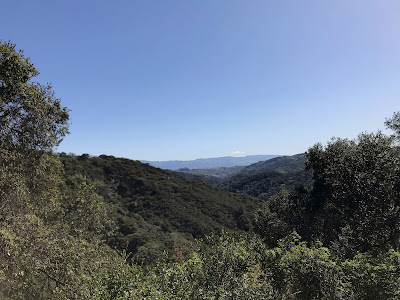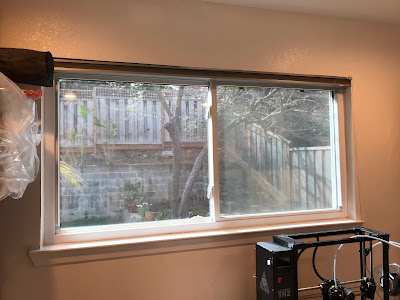When I purchased my generator not too very long ago, I also purchased a generator cover for it. My thought was, at the time, that it would keep the rain off, but may well not keep the critters out.
As it would happen, it did indeed keep the rain off, and it did indeed not keep the critters out. Eventually I found a stash of seeds tucked away in the engine block, I'm pretty sure put there by the local scrub jays. It was at least better than having a bunch of squirrels chewing on the wires, but all the same it was not ideal.
It was clear that I needed a generator shed.
I did a bit of measuring and determined that a roughly 30 inch cube would be suitable for containing this particular generator with a bit of room to spare, so I gathered up some scraps of dimensional lumber (the material of choice for sheds the world over) and started building.
Now there's a difference between shitty 2x4 construction and nice 2x4 construction, and that difference is in joinery. A shitty 2x4 construction uses butt joints held together with nails and screws. This kind of joinery rarely stays square, rigid and tight under even a small amount of use and abuse. A nice 2x4 construction steps things up a little.
For this project I chose to use half-lap joinery. It's not especially fancy, but the difference it makes is really incredible. Where a regular 2x4 frame would flex without bracing, a half-lap buttered up in wood glue will hold strong until the end of time.
The best part is it doesn't even take all that much time. Just an extra few saw cuts on each corner in exchange for not having to figure out what angle to drive a screw or nail through at to secure an awkward butt joint, not having to figure out what offsets things will end up at when they overlap, not having to awkwardly hold things in place while trying to sink the fasteners home.
Just set the pieces in place, pop a few brads in to hold them there, and twiddle your thumbs until the glue dries.
But that's the frame, let's talk about the skin.
There's a whole world of woods out there to choose from, with varying prices, properties, and availability. Since this was going to be an outdoor project, something rot and insect resistant was priority number one. Since it wasn't really going to be a piece of fine furniture, a low cost wood was priority number two. Since I'm lazy, getting something pre-cut in regular sizes was going to be priority number three.
When it comes to cheap, pre-cut, outdoor-friendly woods, it's hard to go wrong with cedar fence boards. The saw-cut surface makes for a perfect match for a rustic aesthetic. The fact that they come soaking wet means you can assemble them tight and just wait for them to dry out to form expansion gaps. The fact that fence boards are cheap as chips meant I didn't end up spending more money on the shed than I did on the generator itself.
Of course all that expansion and contraction can make things a bit tricky when it comes to construction. Wood glue in this case is right out, and in its place comes a much more flexible material: construction adhesive.
The gummy, flexible nature of the bond means that the wood can flex and move without tearing itself apart, or tearing itself loose from the frame it's bonded to. And, given that this is solid wood exposed to the elements, it's going to be doing a lot of flexing and moving.
The brad nails are still the fastener of choice to hold the planks in place while the glue sets, though. They're thin enough that they'll bend harmlessly when the wood moves and not impede anything.
Now as much as cedar is rot resistant, it's important to give it a fighting chance. The first and perhaps most important step is to not let the wood sit against the ground where it will be wet for an extended period of time, and that goes double for the end grain. With that goal in mind, I installed a set of adjustable furniture feet, which will also help keep the shed from rocking when it's finally moved into place.
The second step is to give it a finish to try to keep at least some of the water out. In this case, I used a wiping varnish commonly sold as "teak oil", even though it contains no teak products and is not a drying oil like boiled linseed oil or 100% tung oil. It's basically just a thinned down varnish. I applied a single, heavy coat, and this picture of the underside shows a nice before and after contrast with the above.
And the rest of the shed, soaked down with wiping varnish. Also with a door installed, because I didn't stop to take a picture of the door before putting finish on.
We aren't done yet, of course. The shed still needs a handle for opening the door.
That one will do nicely, and some sort of catch to keep the door closed. I opted for a pair of heavy duty magnetic catches.
Now there's some things I planned for very carefully with this build, and some things where I just winged it. I knew there was something like three feet of space between the chimney and the fence, and as luck would have it that was just barely enough.
Of course, had it been too wide I could have just hoisted it up and carried it over my head, but that would have required a lot more effort to do. Speaking of fitting...
The generator does fit, with just enough room to spare on each side to make loading and unloading easy. I have to say the end result looks quite handsome in its place.
I think it's safe to say this project is a success.




















































